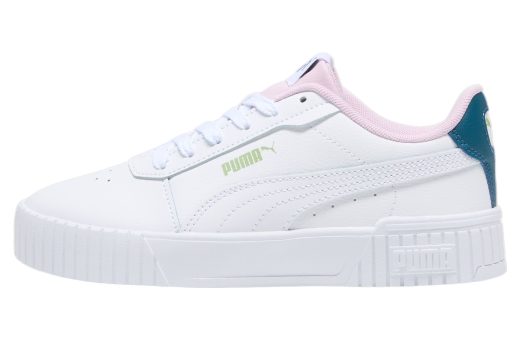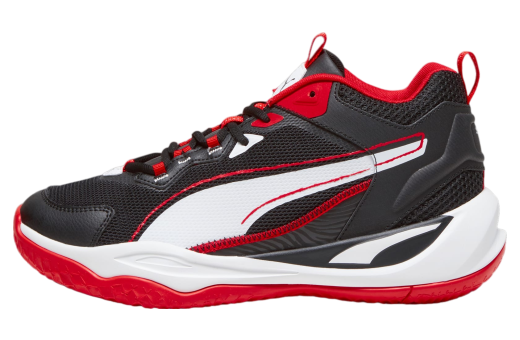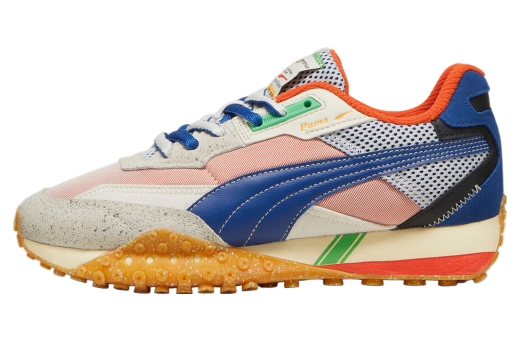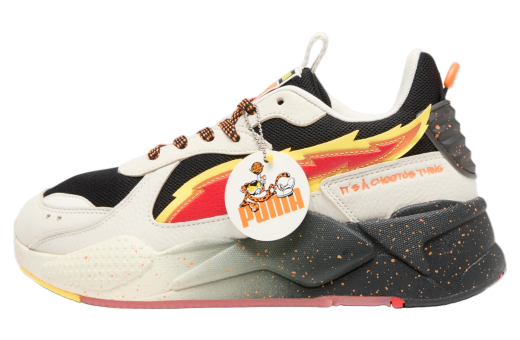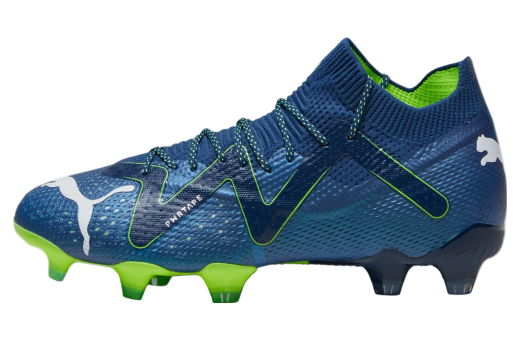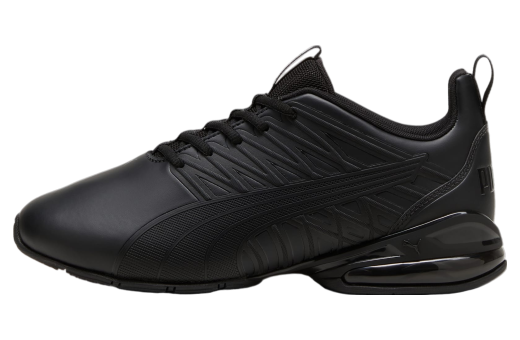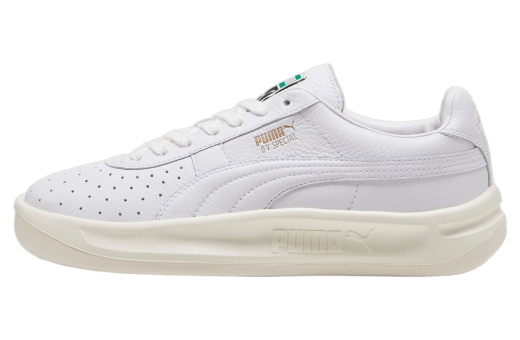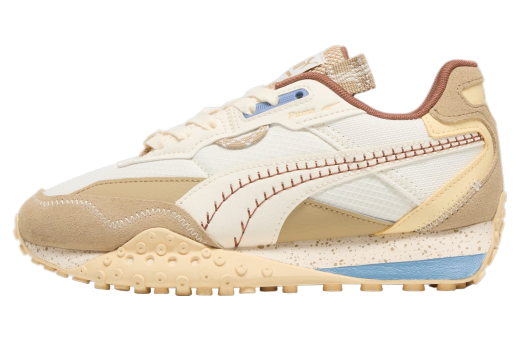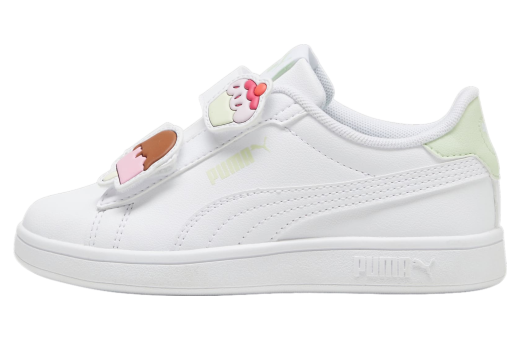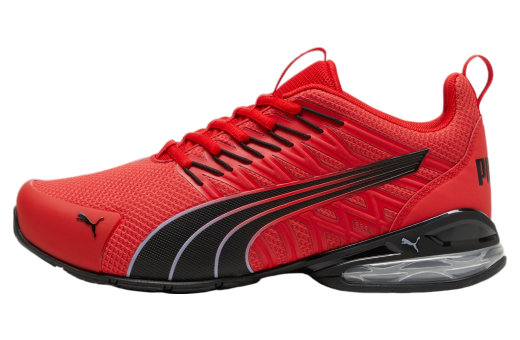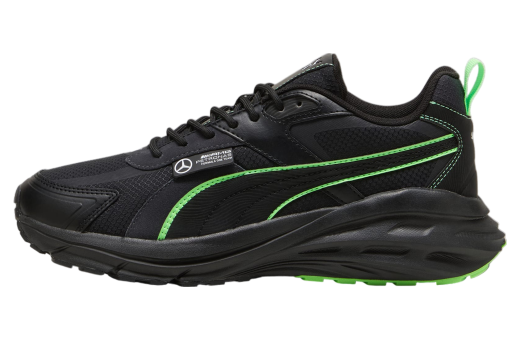Puma
Puma sneakers have long been a staple in the athletic and fashion world, celebrated for their distinctive style, quality, and innovative design. Founded in 1948 by Rudolf Dassler, the brand has consistently pushed the boundaries of sneaker technology and aesthetics. They offer a wide variety of models that cater to both performance needs and casual wear, making them versatile enough for athletes and everyday users alike. With advanced cushioning, durable materials, and ergonomic fits, Puma sneakers provide both comfort and support, allowing wearers to move with ease and confidence whether they are on the track or strolling through the city streets.
Additionally, Puma has maintained a significant cultural influence by collaborating with high-profile designers, athletes, and celebrities. These collaborations have produced limited-edition lines that combine high fashion with athletic excellence, attracting both sneaker enthusiasts and trendsetters. Styles like the Puma Suede, Puma RS-X, and Puma Cali have become iconic, often spotted in fashion magazines and on the feet of influencers. By continuously blending performance with cutting-edge design, Puma sneakers remain a significant figure in the competitive landscape of athletic footwear, appealing to a broad audience who values both function and flair.
History of Puma
### Puma: A Journey Through Its History
#### Early Beginnings
Puma, the iconic German multinational company known for its athletic and lifestyle footwear, apparel, and accessories, has a rich and intriguing history that dates back to the early 20th century. The company's story begins with two brothers, Adolf ("Adi") and Rudolf Dassler, who were born in the small Bavarian town of Herzogenaurach. Their journey into the world of sportswear started in the 1920s. After returning from World War I, the Dassler brothers began producing sports shoes in their mother's laundry room. They founded the Dassler Brothers Shoe Factory in 1924, believing that specialized shoes could enhance athletic performance.
#### The Birth of Puma
The brothers' collaboration led to several innovations in athletic footwear and garnered significant attention. Their reputation grew, and by the 1936 Berlin Olympics, athletes wearing Dassler shoes won several medals, including the legendary US sprinter Jesse Owens. Despite their early success, differences between the brothers began to surface. These differences ultimately led to a split in 1948, dividing the company in two: Adolf founded Adidas, while Rudolf established Puma. The influence of their sibling rivalry cannot be understated; the two companies would go on to become two of the most recognizable names in sportswear.
Puma was officially founded on October 1, 1948, under the name "Puma Schuhfabrik Rudolf Dassler." The company's first product was a football boot called the "Atom," which was notable for its revolutionary design featuring screw-in studs. This innovation quickly caught the attention of athletes and coaches, and Puma began to carve out its place in the competitive world of sports footwear.
#### Innovation and Growth
Throughout the 1950s and 1960s, Puma continued to push the boundaries of athletic footwear innovation. The company's commitment to quality and performance solidified its reputation among athletes and sports enthusiasts. In 1952, Puma introduced the "Super Atom," the world's first boot with screw-in studs. This breakthrough allowed players to customize their footwear based on field conditions, giving them a significant advantage.
Puma's innovative spirit was further exemplified by its collaboration with West German national soccer player Heinz Fütterer, who set a new 100-meter world record in Puma shoes in 1954. This achievement laid the groundwork for Puma's enduring connection to soccer, a relationship that would become a cornerstone of the brand.
In 1960, Puma made headlines again with the introduction of the "Puma Disc," the world's first laceless sports shoe. This innovation was a game-changer for athletes who needed quick and easy adjustments to their footwear during competition. Puma's dedication to pushing the envelope and setting new standards in sports technology made it a beloved brand among athletes worldwide.
#### Puma's Global Expansion
During the 1970s and 1980s, Puma experienced significant growth and expanded its presence on the global stage. The company's commitment to collaborating with athletes resulted in numerous partnerships and endorsements, catapulting Puma into the limelight. One of the most iconic collaborations was with Brazilian soccer legend Pelé. Puma's sponsorship of Pelé during the 1970 World Cup solidified the brand's connection to the world's most popular sport.
The 1980s also saw Puma's foray into lifestyle and fashion, as the brand recognized the growing trend of sportswear crossing over into everyday fashion. This marked the beginning of Puma's evolution into a lifestyle brand, with their footwear and apparel gaining popularity beyond the realm of sports.
#### Challenges and Reinvention
Despite its successes, Puma faced various challenges in the late 20th century. The 1990s brought financial difficulties and organizational changes. During this time, the brand struggled to maintain its edge in an increasingly competitive market. However, Puma's leadership recognized the need for reinvention.
In 1993, Jochen Zeitz was appointed as CEO of Puma. His strategic vision and leadership marked a turning point for the company. Zeitz focused on revitalizing Puma's brand image and positioning it as a premium sports lifestyle brand. He implemented a strategy known as "Fast Product," which emphasized speed and agility in product development and marketing.
Puma's reinvention under Zeitz's leadership included high-profile collaborations with designers and artists, as well as a renewed focus on innovation. This shift brought Puma back into the spotlight, attracting a new generation of consumers who valued both performance and style.
#### Puma's Cultural Impact
Puma's influence on popular culture became particularly evident during the early 2000s. The brand's ability to seamlessly blend sports and fashion resonated with a diverse audience. Puma became synonymous with urban culture, streetwear, and youth fashion. Collaborations with iconic figures such as hip-hop artist Jay-Z and designer Alexander McQueen further elevated Puma's status as a trendsetter.
One of Puma's most significant cultural contributions was the "Suede" sneaker. Originally introduced in 1968, the Puma Suede became a cultural icon and a symbol of the emerging hip-hop and breakdancing scenes of the 1980s. The shoe's timeless design and connection to music and street culture reinforced Puma's status as a brand that transcended sports.
Puma also maintained a strong presence in professional sports. The brand's sponsorship of athletes like Usain Bolt, the fastest man in the world, further underscored Puma's commitment to performance and excellence. Bolt's record-breaking achievements on the track showcased Puma's dedication to pushing the limits of human potential.
#### Sustainability and Social Responsibility
As Puma continued to grow and evolve, the company also recognized the importance of sustainability and social responsibility. Puma's commitment to environmental and ethical practices became a central theme in its operations. The company implemented initiatives to reduce its carbon footprint, promote fair labor practices, and prioritize sustainable sourcing.
In 1999, Puma became a founding member of the Fair Labor Association (FLA), signaling its dedication to improving labor conditions in its supply chain. The brand also launched the "PUMA.vision" initiative, which aimed to integrate sustainability into every aspect of its business.
Puma's efforts were not limited to environmental and social responsibility. The brand also championed diversity and inclusion. Puma's "She Moves Us" campaign, launched in 2021, celebrated and empowered women in sports, fashion, and culture. This initiative highlighted Puma's commitment to gender equality and recognizing the achievements of women worldwide.
#### Puma Today and Beyond
Today, Puma stands as one of the world's leading sportswear brands, celebrated for its innovation, style, and commitment to social and environmental responsibility. The company's journey from a small Bavarian shoe factory to a global powerhouse is a testament to its resilience and adaptability.
Puma's collaborations with athletes, designers, and cultural icons continue to shape its identity and influence. The brand's focus on sustainability, inclusivity, and innovation ensures that it remains relevant in an ever-changing world. Puma's ability to balance tradition with modernity, sport with fashion, and performance with style has solidified its place in the hearts of millions.
As Puma looks to the future, it remains dedicated to pushing boundaries and setting new standards in the industry. The company's commitment to excellence, both on and off the field, ensures that Puma will continue to inspire and empower athletes, fashion enthusiasts, and individuals around the world.
#### Conclusion
The history of Puma is a story of vision, innovation, and resilience. From its humble beginnings as a small German shoe factory to its status as a global icon, Puma's journey is a testament to the power of determination and adaptability. The brand's ability to embrace change, while staying true to its core values, has allowed it to thrive in an ever-evolving world.
Puma's impact extends beyond sports, touching the realms of fashion, culture, and social responsibility. The brand's commitment to sustainability, diversity, and innovation positions it as a leader in the industry and a symbol of positive change.
As Puma continues to evolve and grow, its legacy of excellence and innovation will undoubtedly inspire future generations. The story of Puma is not just the history of a company; it is a testament to the enduring spirit of those who dare to dream, create, and redefine what is possible.
